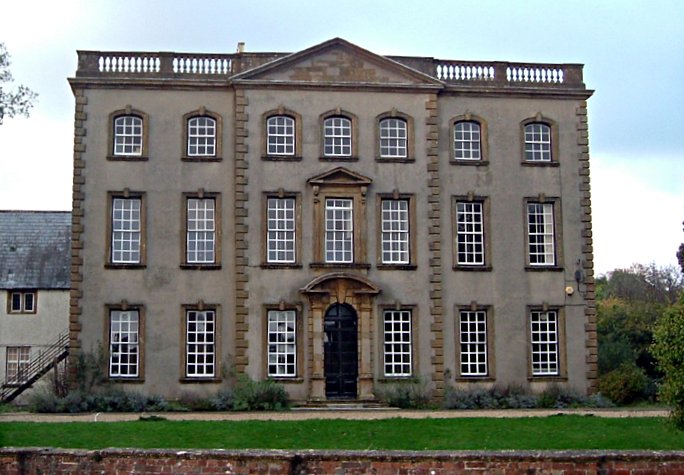Henry Seymour (Redland) on:
[Wikipedia]
[Google]
[Amazon]
Henry Seymour (21 October 1729 – 14 April 1807) was a British politician.


Life
Seymour was the eldest son ofFrancis Seymour, of Sherborne, Dorset
Francis Seymour (1697 – 23 December 1761), of Sherborne House, Dorset, was a British landowner and Tory politician, who sat in the House of Commons from 1732 to 1741.
Seymour was the second son of Sir Edward Seymour, 5th Baronet and his wif ...
. He was educated at New College. In January 1746/7, he inherited the estate of East Knoyle
East Knoyle is a village and civil parish in Wiltshire, in the south-west of England, just west of the A350 and about south of Warminster and north of Shaftesbury, Dorset. It was the birthplace of the architect Sir Christopher Wren. The parish ...
from his uncle, William.
In 1753, Seymour married Lady Caroline Cowper (d. 1773), daughter of William Clavering-Cowper, 2nd Earl Cowper
William Clavering-Cowper, 2nd Earl Cowper (13 August 1709 – 18 September 1764), styled Viscount Fordwich between 1718 and 1723, was a British peer and courtier.
Born William Cowper, he was the eldest son of William Cowper, 1st Earl Cowper, by ...
, by whom he had two daughters:
* Caroline Seymour (31 January 1755 – 20 March 1821), married in September 1775 William Danby, of Swinton Park (b. 9 July 1752)
* Georgiana Amelia Seymour (31 Dec 1756 – ?), married on 27 September 1794 Félicité Jean Louis de Durfort, Comte de Deyme (4 March 1752 – 10 March 1801)
He inherited an estate at Sherborne, Dorset upon the death of his father in December 1761, and also owned estates at Redland Court
Redland is a neighbourhood in Bristol, England. The neighbourhood is situated between Clifton, Bristol, Clifton, Cotham, Bristol, Cotham, Bishopston, Bristol, Bishopston and Westbury Park, Bristol, Westbury Park. The boundaries of the district ar ...
, Gloucestershire, and Northbrook, Devonshire. After his father's death, he entered politics, obtaining the office of Groom of the Bedchamber on 16 February 1763 and being returned as Member of Parliament for Totnes
Totnes ( or ) is a market town and civil parishes in England, civil parish at the head of the estuary of the River Dart in Devon, England, within the South Devon Area of Outstanding Natural Beauty. It is about west of Paignton, about west-so ...
in a by-election that year. On 17 January 1765, he resigned his office as Groom of the Bedchamber. In 1768, he was returned for Huntingdon
Huntingdon is a market town in the Huntingdonshire district in Cambridgeshire, England. The town was given its town charter by King John in 1205. It was the county town of the historic county of Huntingdonshire. Oliver Cromwell was born there ...
. After buying an estate at Norton, Worcestershire
Norton is a village in the Wychavon district of Worcestershire, from the boundary of the City of Worcester, England. The village sits within the Norton Juxta Kempsey civil parish and is split in two by the M5 motorway, with the original vill ...
, he was returned as a Whig for Evesham
Evesham () is a market town and parish in the Wychavon district of Worcestershire, in the West Midlands region of England. It is located roughly equidistant between Worcester, Cheltenham and Stratford-upon-Avon. It lies within the Vale of Evesha ...
in 1774, but did not stand in 1780. He is only known to have addressed the House once, in 1776, supporting Fox's motion to inquire into the mismanagement of the American war.
On 5 October 1775, after the death of his first wife in 1773, he married the widow Anne Louise Thérèse, Comtesse de Panthou. Louise (1741–1821) was the daughter of Charles de la Martellière (b1700) and Claudine Louise de Lory (1706–1742). By this marriage he had one son:
* Henry Seymour (1776–1849)
Seymour and his wife moved to Paris in 1778, and he soon after bought an estate at Prunay. Around 1779 or 1780, Seymour became the lover of Madame du Barry. He separated from his second wife in early 1781.
The French Revolution
The French Revolution ( ) was a period of radical political and societal change in France that began with the Estates General of 1789 and ended with the formation of the French Consulate in November 1799. Many of its ideas are considere ...
led him to flee France in August 1792, and he lost most of his property in that country through confiscation. He spent the rest of his life in retirement at Knoyle. Seymour is often stated to have died in 1805, but his monument in Exeter Cathedral
Exeter Cathedral, properly known as the Cathedral Church of Saint Peter in Exeter, is an Anglican cathedral, and the seat of the Bishop of Exeter, in the city of Exeter, Devon, in South West England. The present building was complete by about 140 ...
dates from 1807. By this time, he had disposed of his estates at Sherborne, Redland, and Norton, leaving Knoyle and Northbrook to his son Henry.
References
External links
* {{DEFAULTSORT:Seymour, Henry 1729 births 1807 deaths Alumni of New College, Oxford British MPs 1761–1768 British MPs 1768–1774 British MPs 1774–1780 Members of the Parliament of Great Britain for Totnes Henry Seymour Whig (British political party) MPs